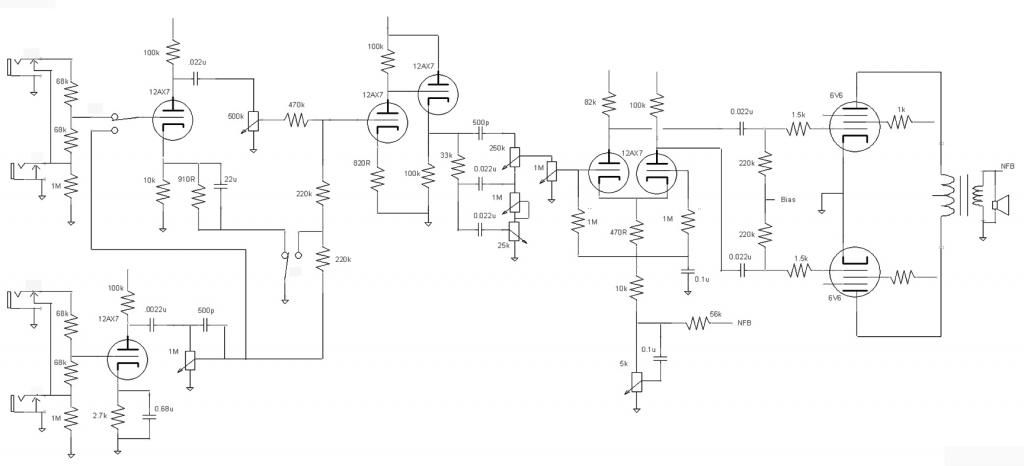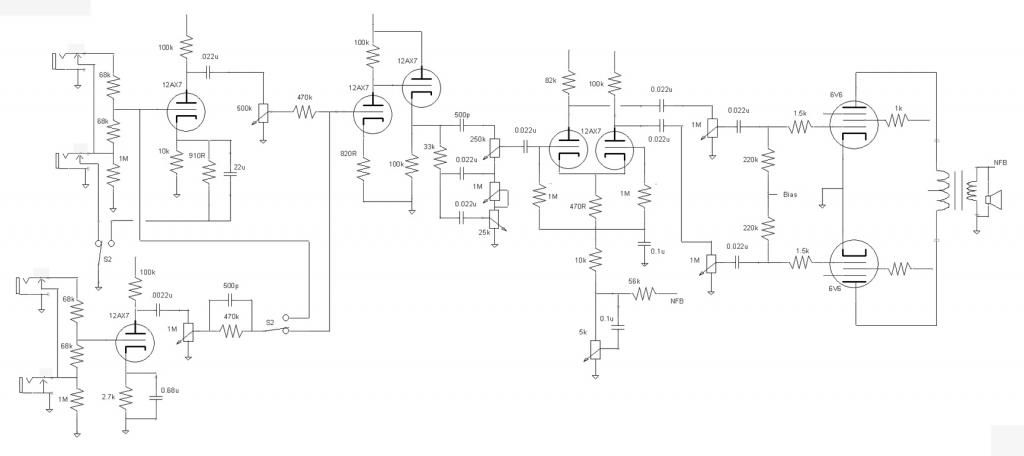They guy at work wants a 15-20W Plexi but from hearing some of the type of guitar he likes I think he really wants a higher gain model, more of a 80's-90's sound. So I started to mess around with the Plexi schematic and came up with this with the thought of using a 500k pot I have with a dual push-pull switch on it. While the hi gain position is not 100% true to the 2203 circuit I think it might be a good compromise. The schematic has the switches in the Plexi position.
While the 500k pot should be a 1M, it is harder to come by 1M's with the switch, I think it loading the first stage more would be less detrimental than after the second stage. In 2203 mode I am going to loose signal after the second stage with the 470k and 220k combination already, normally there would be a pair of 470k's. The first stage is also loaded with the other 220k resistor, the price I have to pay for using two switches and wanting the Plexi circuit to remain true to its roots with the 470k mixing resistors.
Also on the 2203 the coupling cap after the first stage is a 0.022uF while the Plexi value is 0.0022uF. I think the reduction of bass should not be a detriment in high gain. Other than that just tune the PI for 6V6's or maybe some EL84's. At least that is the theory. OK guys, now tell me where I am going wrong.

While the 500k pot should be a 1M, it is harder to come by 1M's with the switch, I think it loading the first stage more would be less detrimental than after the second stage. In 2203 mode I am going to loose signal after the second stage with the 470k and 220k combination already, normally there would be a pair of 470k's. The first stage is also loaded with the other 220k resistor, the price I have to pay for using two switches and wanting the Plexi circuit to remain true to its roots with the 470k mixing resistors.
Also on the 2203 the coupling cap after the first stage is a 0.022uF while the Plexi value is 0.0022uF. I think the reduction of bass should not be a detriment in high gain. Other than that just tune the PI for 6V6's or maybe some EL84's. At least that is the theory. OK guys, now tell me where I am going wrong.





Comment